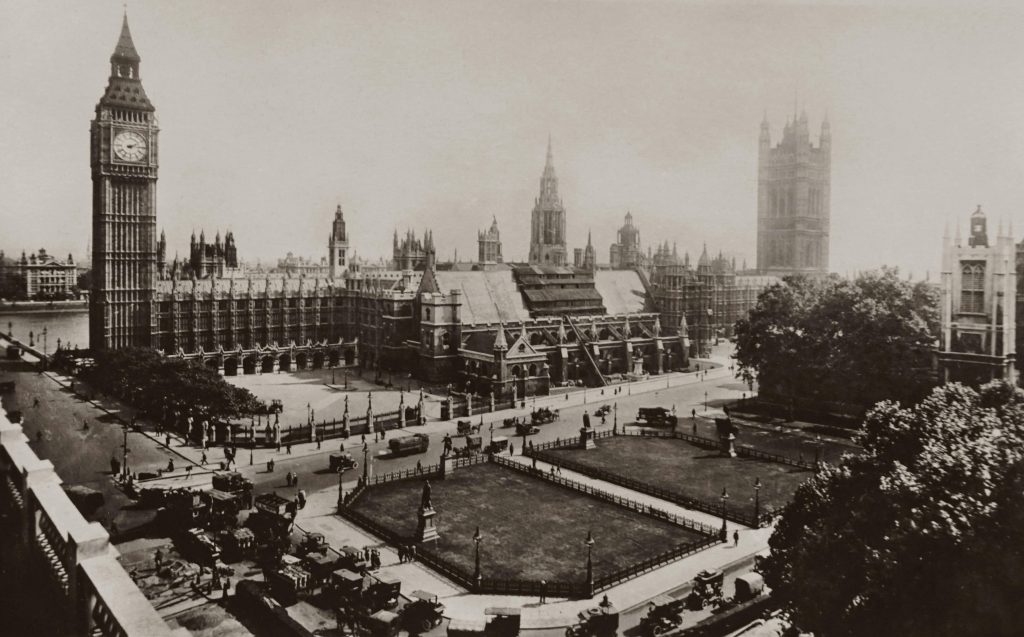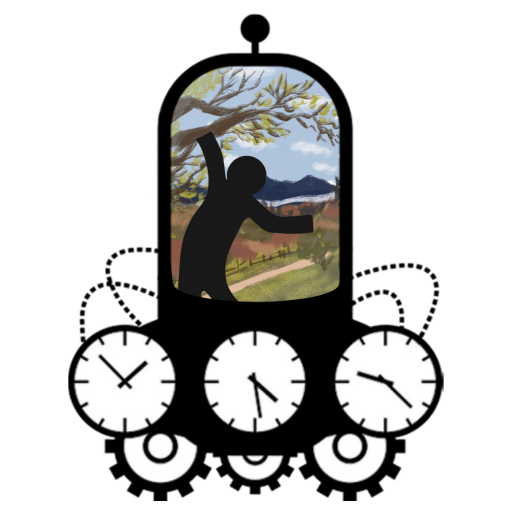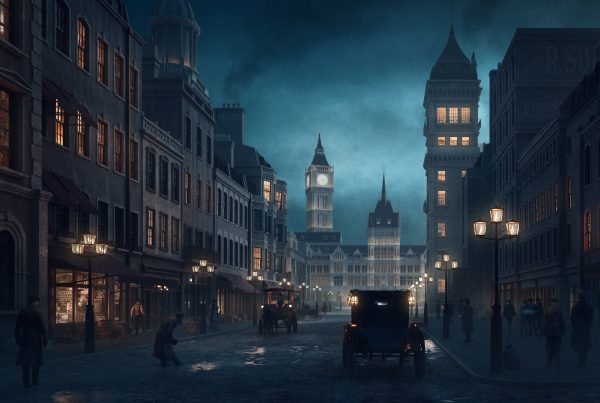How do you set the stage for a TTRPG murder investigation?
Somewhere in the distance, a bell tolls midnight. Rain drips from the rooftops onto the street. Figures murmur behind closed doors. Their voices sound guilty, but their silence sounds worse. The investigation has not even begun, but one question already haunts you: who can you trust?

You guessed it: more murder ideas equals more blog posts! My name is Iris and over the next 2,5 months I will create a TTRPG murder mystery module as part of my VALUE Foundation internship. In the previous post, I introduced the GUMSHOE system and revealed the story concept. This time, we will tackle a different piece of the puzzle: how do you create an atmospheric and fun backdrop for a mystery?
In a Land Far, Far Away…
When I started brainstorming for the TTRPG concept, I quickly realised I wanted people to be transported to a Sherlock-style investigation. I already knew where I wanted this mystery to take place: late 19th century London.
Industrialisation, scientific curiosity and social intrigue – this period sits at a border between the old and the modern. It allows me to blend historical elements into the story, yet is also modern enough for me to understand how the world works. And let’s be honest, Sir Arthur Conan Doyle hard-wired this period into our collective understanding of murder mystery settings (thanks!).
In the late 19th century, London was expanding its railway system, which provided a great backdrop for the investigation. Diving into Victorian railway occupations, old city maps and the first female detectives in Britain gave me a lot of inspiration. Additionally, the complex social structures provide hooks for clues and roleplaying. But why this stereotypical setting?
Even when you have never set foot there, you can clearly picture it: fog, cobblestones, those cool hats…. From real Victorian crime stories to modern mystery series, this period has become a synonym for ‘mystery.’ The same goes for a post-apocalyptic or a Wild West world: the stereotypes might be just that, but they work.
Books, films, series, and games have reinforced these images, which ensures that players do not need endless descriptions of the world to understand it. A dark alley points means danger, and corsets and tailored suits point to social structures that players understand intuitively. This setting helps players feel immersed in the world without a full brain workout, which leaves room for the investigation itself.
Detectives in Training
Once I set the stage, I had to think about how both new and experienced players could navigate it. Players can make their own characters, but I wanted to create pre-generated character concepts so that anyone could have a character ready in 15 minutes – even if they have never touched a TTRPG before.
I decided to create archetypes based on occupations and skill sets, such as those from The Murderer of Thomas Fell and the Trail of Cthulhu TTRPG games (Pelgrane Press). I chose occupations for the concepts (such as a doctor) and assigned abilities from the GUMSHOE system so each one had a distinct speciality.
Once I had a vague idea of each archetype, I realised the occupation-based titles were too narrow. If someone wants to play an eight year old girl, they cannot choose the doctor occupation without raising a lot of questions about historical accuracy (aside from the questions about a child murder investigation). I renamed the concepts to make them broader, allowing more room for players to add their own flavour. For example, instead of Doctor, the archetype became a Healer, which could be a surgeon, midwife, etc. The Scholar might be a brilliant librarian… or comically forgetful detective.
After making the archetypes and their descriptions, I had to face the most terrifying part: maths. I calculated the points needed to build the skill sets and assigned the ratings to balance all character abilities. This creates spotlight moments for every character, ensuring all players can shine in the investigation.
Suspects in the Shadows
To make the module more dynamic, I needed to introduce more life into the story. A mystery is not just about clues, but also about the people who give or hide them. So, I needed to create these people!
Instead of creating a full concept for every NPC (non-playable characters), I identified the types of interactions were needed to make the mystery dynamic and well-rounded: a helpful hand, a tense interrogation, etc. Then, depending on the ‘vibes’ in the session, the GM (game master) could have the players talk to a shifty figure or a sweet old neighbour.
These minor NPCs act as fun ‘vessels’ of information, but there are also more in-depth characters: the major NPCs. These characters play a bigger role in the story. Their relationship to the crime, social background, and mannerisms all matter. One of these is the murder victim, but you already knew that (it would be a very boring murder mystery without one). The rest? You will have to get to know them the hard way: playing the module!
The murder has been committed, the stage is set, and now investigators have been invited. So… What is next? In the upcoming post, I will talk about design and flavour: how I will turn all these ingredients into a playable and fun mystery experience. Until then, keep your suspect lists long and your theories wild!

Iris van der List is a Research Master student of Literary Studies at Radboud University and an intern of the VALUE Foundation. She loves examining how narratives come alive in different media and is currently investigating narrative horror games. Iris is a self-proclaimed console gamer girly and loves a wide range of narrative-rich and immersive games. But despite the release of amazing new games, she always seems to find her way back into a Skyrim rabbit hole (sorry). If you would like to contact her, you can message her via LinkedIn!






